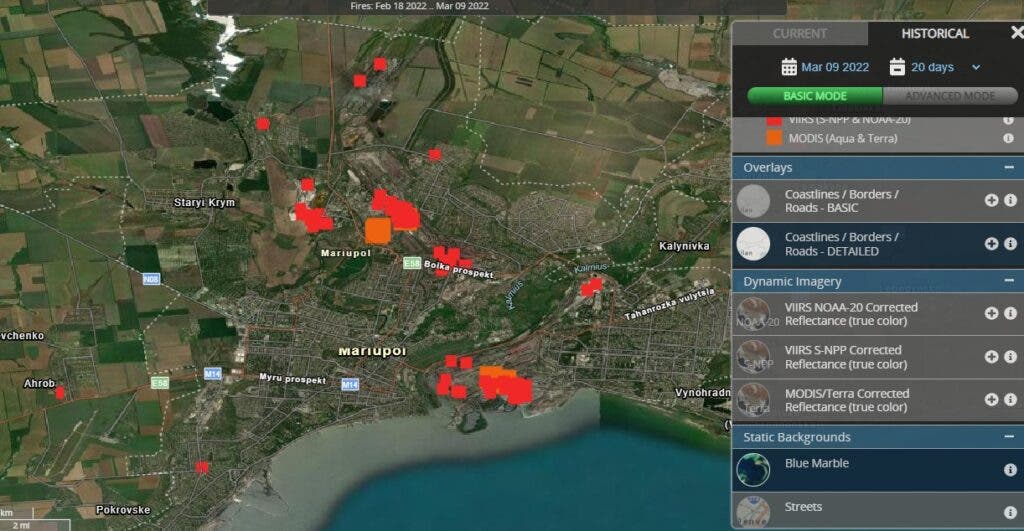A month ago, Mariupol (population 431,000) was a city like pretty much any other in Ukraine. A coastal city, Mariupol was known for its seaside resorts and nightclubs. But Mariupol was regarded as a key strategic city and target for Russian forces. The way things stand, capturing Mariupol would offer Russia full control over the Sea of Azov, and would cut Ukraine off from a big industrial and transportation hub.
So Russian forces are currently sieging Mariupol, shelling it day and night, destroying countless civilian buildings, including hospitals, schools and theaters. Life in Mariupol currently means no electricity, heating, or water, constant bombing, and the increasing threat of a Russian assault. The devastation is so great you can see it from space.
The sheer scale of the damage is disheartening. Everywhere you look, there are residential buildings either on fire or completely destroyed.
Even NASA satellites that are monitoring wildfires are catching some of the attacks on Mariupol. Here is an overlay of the fires detected over the past 20 days:

Copernicus satellites also show Mariupol burning?
No matter what scale you look at, the devastation of the city is striking. What’s even more disheartening is that as members of the Open Source INTelligence community (OSINT) document this destruction, it’s become clear that most of these shelled areas are civilian — mostly residential buildings, along with commercial centers and public buildings.
Russia is also reportedly using cluster bombs in Ukraine, which release many small bomblets over a wide area, posing great risks to civilians both during attacks and afterwards.
It’s unclear if Russian forces are intentionally targeting civilian buildings or if they are bombing indiscriminately but the end result is that civilian areas are getting shelled. Over 2,400 civilians in Mariupol have been reportedly killed, although the real number is likely much higher.
“We have inaccurate data on civilians killed,” said Pyotr Andryushchenko, an adviser to the city government, in an interview with Current Time, a Ukrainian radio station. He said the official figure represented a “small handful” of those killed and estimated that the actual total could be as high as 20,000.
With no more food and water, people in Mariupol are forced to melt snow to have drinking water. The city is experiencing a humanitarian crisis of dramatic proportions — and the bombs keep falling.
Usually, we try to have a fitting ending to articles. But there’s no closure in Mariupol. The fate of Mariupol, like the fate of Ukraine, is critical, and the worst may be yet to come.
Was this helpful?



